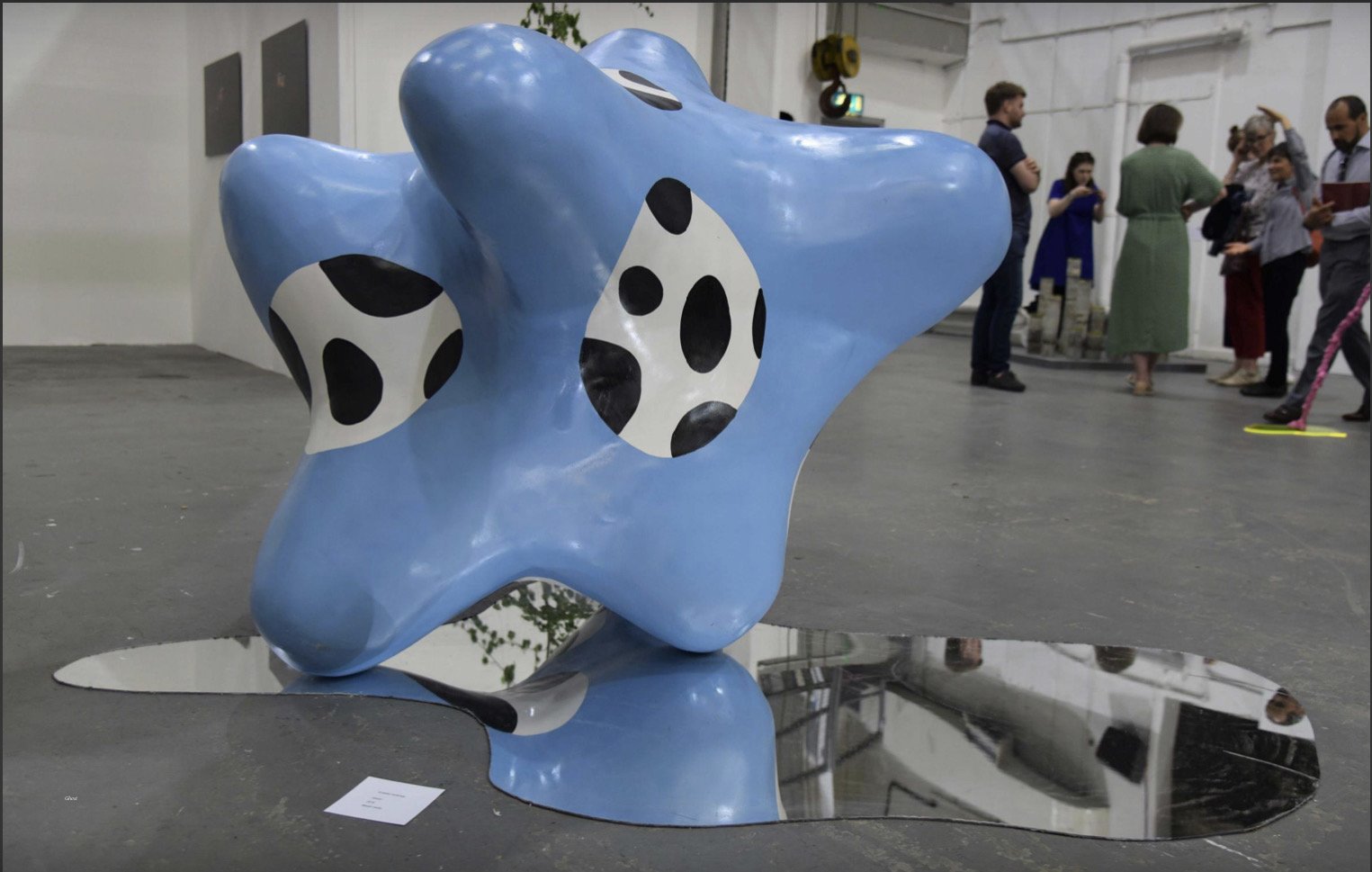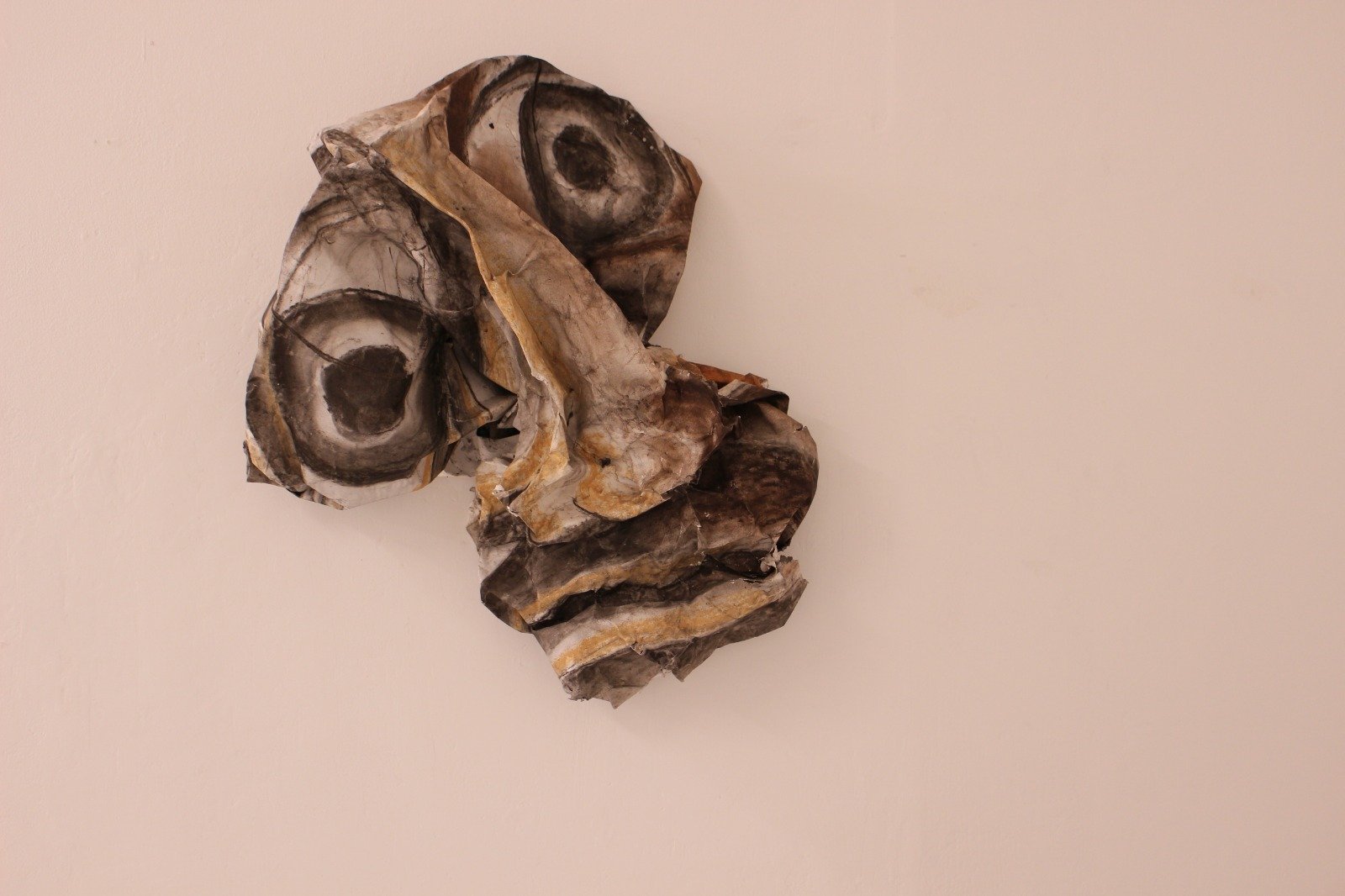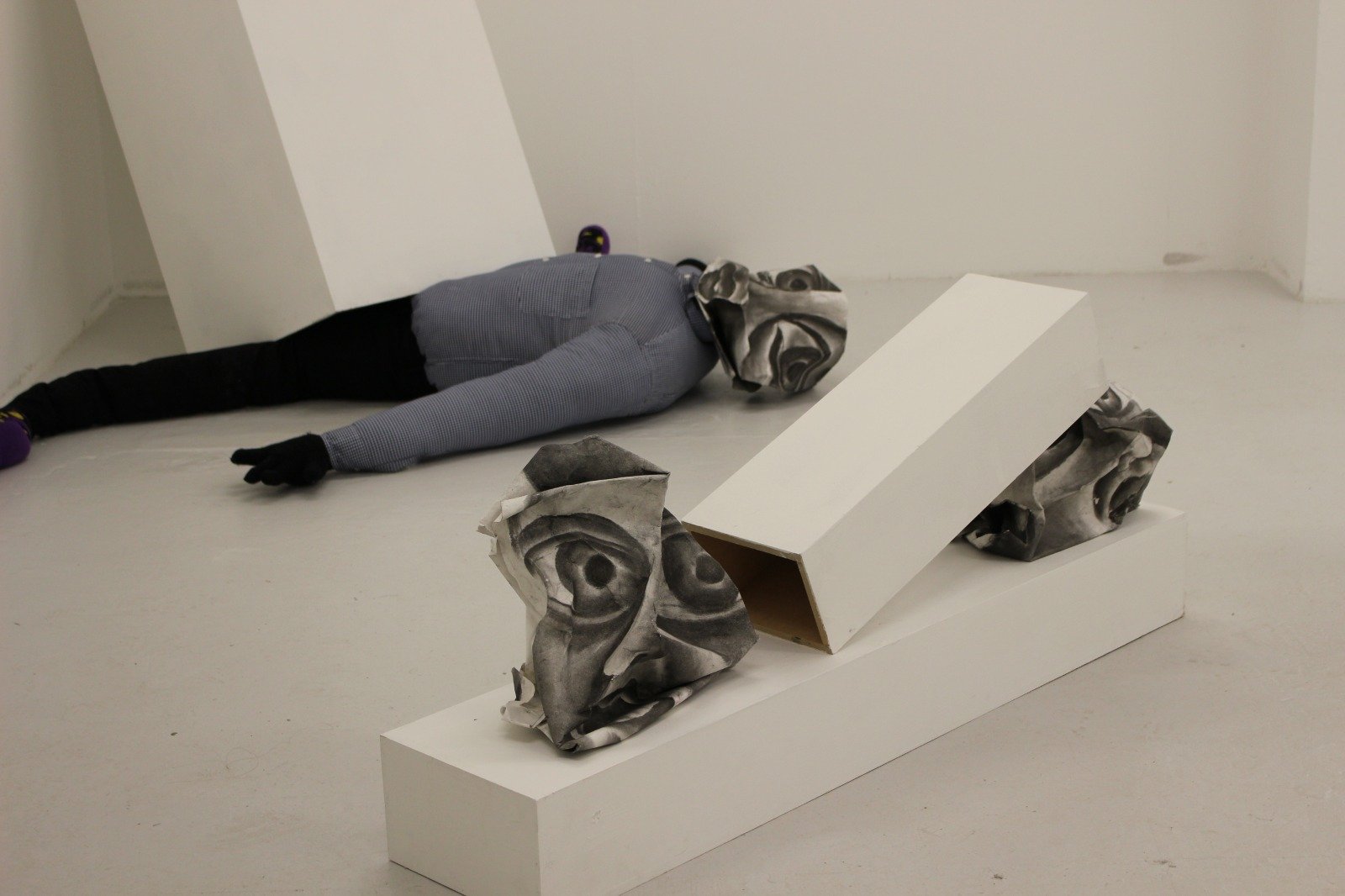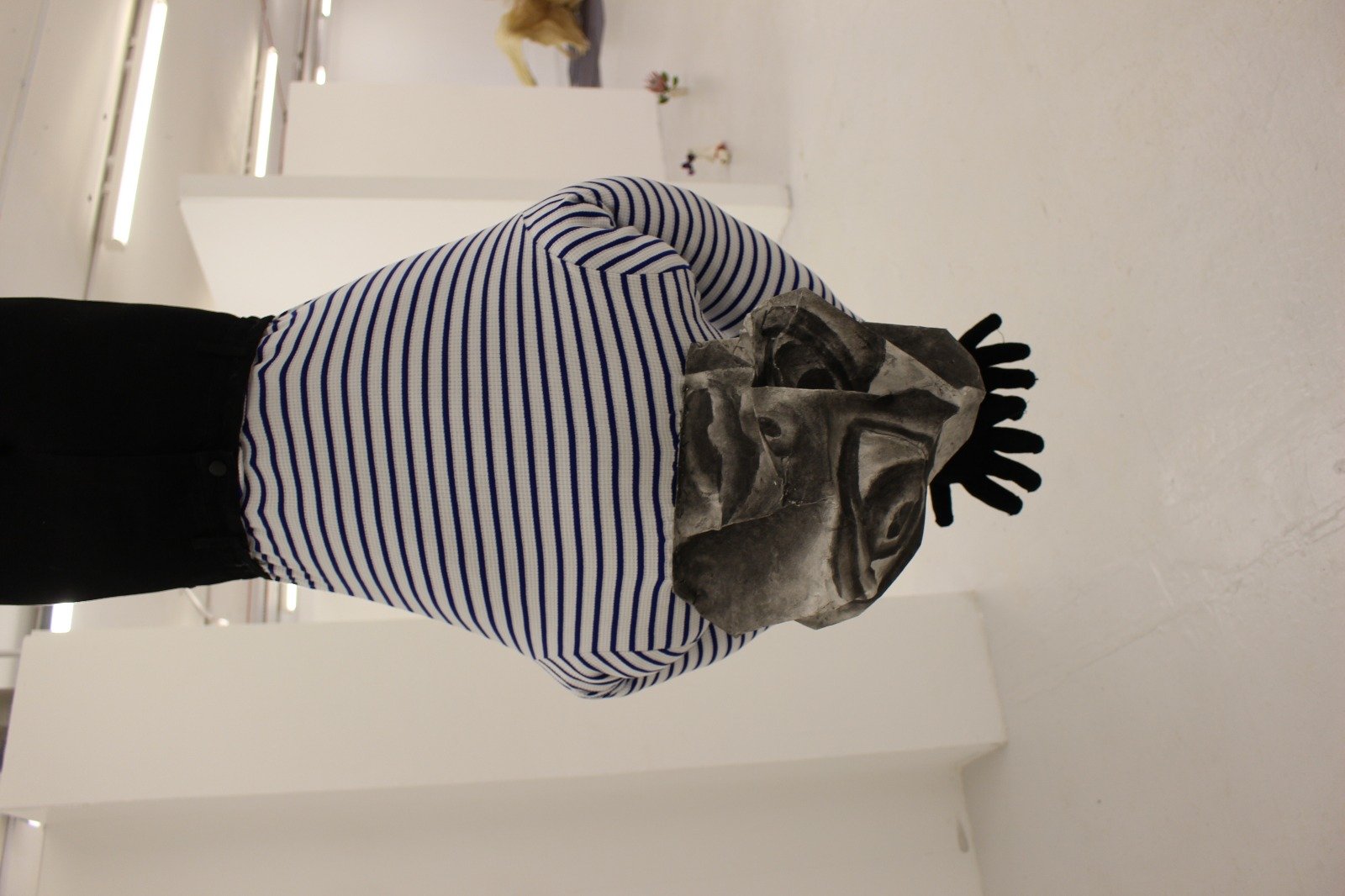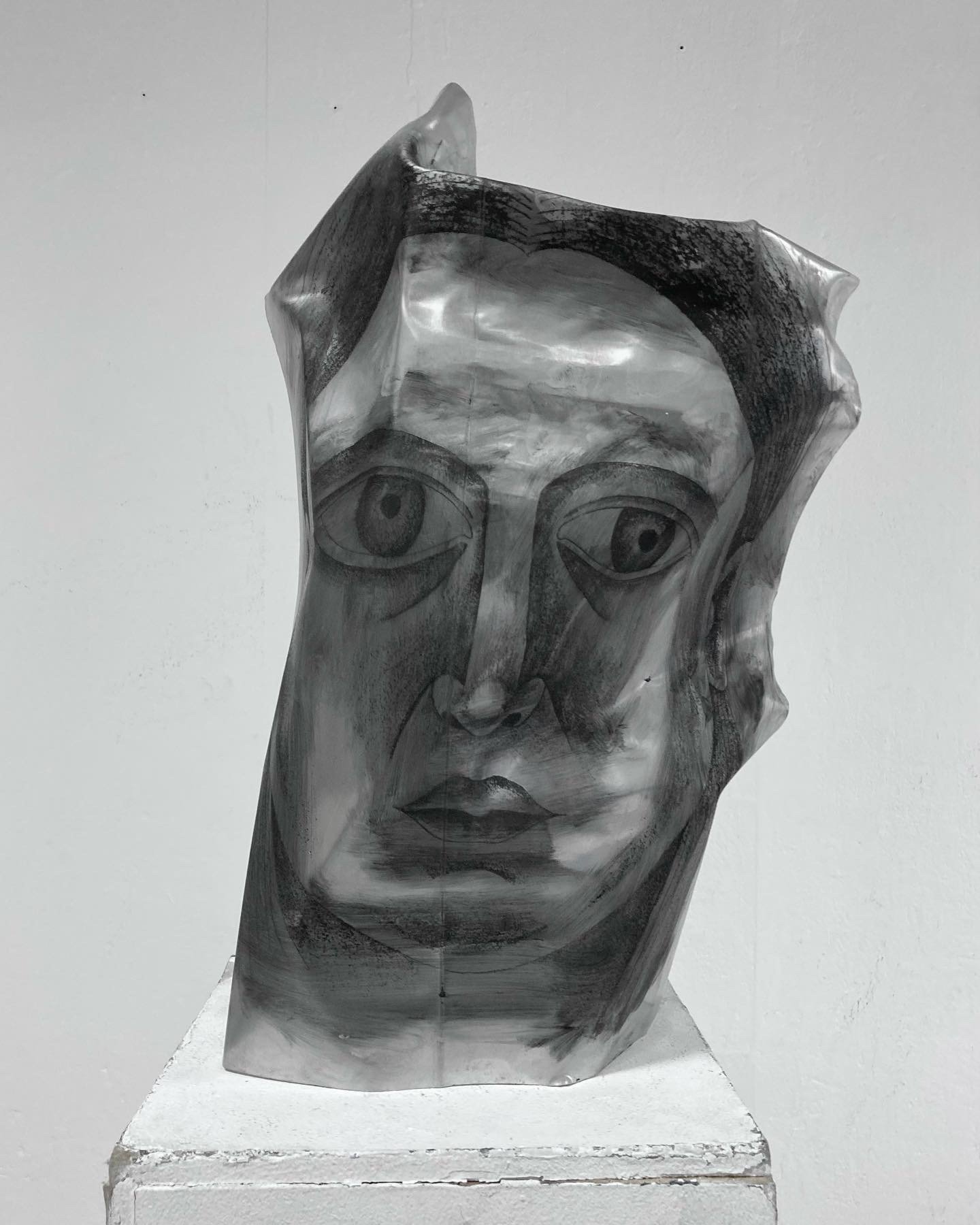Interview with Evaldas Gulbinas
Born in Lithuania. Evaldas has finished two art schools. Afterwards, he moved to London, uk. Evaldas did foundation course in Art and design at West Thames College. Graduated in University of Westminster with a Bachelor’s Degree in Fine Art- Mixed Media. Later on, he did Master's degree in Fine Art at Chelsea College of Art in University of the Arts London. Evaldas is not just a Fine artist, but a Tattoo artist, as well. Working through tattoo parlours and being active to create art. Evaldas art practice goes through tattoos, sculptures, paintings, drawings, installations and mixed media work. Combining his fine art and tattoo practice makes new possibilities to open.To create and live, Evaldas always absorbs environmental factors, which generates new ideas to develop.
How did your formative years and early art education in Lithuania influence your initial artistic style, and in what ways has your move to London and subsequent education at West Thames College, the University of Westminster, and Chelsea College of Art expanded or transformed your artistic vision and technique?
When I was very young, I started art school in Kedainiai city, Lithuania. Here, I was learning through various art disciplines and techniques. As always, I start with an idea or concept for my art. I was learning sculpture, drawing, painting, composition, and life drawing. After finishing art school, I attended the M.K. Ciurlionis National School of Art in Vilnius city, Lithuania. I continued learning design, composition, sculpture, drawing, painting, and life drawing. This period expanded my creative world even more. I’ve always enjoyed creativity; it’s like another world for me.
Education is vital for learning new things, so I moved to London, UK, to study arts. I didn’t want to be stuck in one place or country. As a skateboarder, I was often exposed to graffiti, urban art, and street art. At some point, I started tattooing and eventually got tattoo apprenticeships, leading me to tattoo professionally. Tattooing introduced me to a different art language that aligned with my passion. I pursued a Foundation in Art and Design at West Thames College to see how I progressed in art while trying new skills during tattooing. This combination of working in tattoo parlours and studying art and design was beneficial.
In college, I began exploring mixed media work, multimedia, installations, drawing, life drawing, painting, design, and graphic design. I was particularly interested in multimedia, using projectors on my sculptures and incorporating sound. From tattooing, I developed a unique style that was underground, rough, and abstract. This style influenced my sculptures and mixed media work. Over time, my style evolved to become more curved and sketchy, and I incorporated these elements into tattoos, sculptures, drawings, paintings, installations, and multimedia work.
My studies, including a Bachelor's degree in Fine Art - Mixed Media at the University of Westminster and a Master’s degree in Fine Art at Chelsea College of Arts, further transformed my artistic vision. My art became more conceptual, and I integrated my tattooing skills into 3D sculpture. Through these years of studying and creating art in various mediums, I gained new ideas, visions, creativity, skills, and knowledge, making my art more flexible and not confined to one style or concept.
Your art explores themes of social change, freedom, conflict, and adversity. How do you approach these complex themes across different mediums, such as tattoos, sculptures, and installations, and what strategies do you use to ensure that your work conveys a consistent and powerful message?
My art is all about expressing and exploring ideas, which naturally creates a consistent and powerful message. Themes of social change, freedom, conflict, and adversity are always spinning in my head and naturally convey onto my art pieces. Social change is everywhere, and society is an interesting concept. We all want social change and freedom, which pushes the boundaries in any art medium.
For example, people get tattoos to signify change. I create colorful, humorous images or characters that reflect societal changes and the idea of freedom. Creativity is a powerful tool for change, and creating art with no rules allows for true freedom. Conflict and adversity are also ever-present themes. Conflict often drives me to generate new ideas, which I express through various art mediums, creating contrasts like skin and metal or wood and ice. Adversity is essential to explore, as it translates the memories of people in challenging situations into art.
These themes are interconnected and present in our lives. My art reflects this interconnectedness, ensuring a consistent and powerful message across different mediums.
Combining fine art with tattoo art is quite unique. Can you discuss a specific project where your skills as a fine artist significantly influenced a tattoo design, or vice versa, and the creative process behind merging these two art forms?
When I started creating colorful, imaginative, and ambiguous images in my fine art, it naturally influenced my tattoo designs. These images left more room for imagination and eventually evolved into colorful, humorous characters. This shift in fine art affected my tattooing style, leading me to tattoo people in the same way. Conversely, tattooing also impacts my fine art. I make sculptures that resemble my tattoo designs and drawings that look like sculptures or installations.
For example, I combine sculptures with drawings on paper or metal to create powerful shapes. Sometimes, I create sculptures based on my tattoo designs by printing them on carbon or paper and using chemicals to make them strong and figurative. The drawing skills used in tattooing are essential in creating fine art pieces like sculptures. The creative process behind merging these two art forms involves a natural interplay where one medium influences the other, resulting in cohesive and dynamic art.
Your metal sheet sculptures are known for their combination of engraving and painting. Can you walk us through the technical and creative process of developing one of these sculptures, from the initial concept to the final piece?
The process begins with a concept inspired by my tattooing and drawing work. I draw the design on a metal sheet with a pencil and then start engraving. Engraving is similar to tattooing, requiring calm and concentration. Once the engraving is complete, I use physical energy to shape the sculpture by beating it with a hammer. The shapes are not random but are composed to fit the original drawing's idea and composition.
After engraving and shaping, I apply acrylic paint to add darkness and a melancholic vibe, reflecting my emotional state. The process of creating these sculptures is a blend of precision and physicality, with my brain and body working together quickly to achieve satisfaction. My changing emotions, from dark to happy, influence the final piece, resulting in a sculpture that embodies both technical skill and emotional depth.
Environmental factors and personal experiences play a crucial role in your creative process. Can you share an example of a piece where a specific environmental element or personal experience significantly influenced its creation and thematic expression?
One example is my metal pieces, created during a period when I felt dark and melancholic. I was living in a big city with constant rain and limited nature, which influenced my mood and the art I created. A sculpture titled "Ghost" emerged from this period. It is an ambiguous, colorful piece with eyes, reflecting my feelings of being unseen and watching others like a ghost. This personal experience of isolation and melancholy shaped the thematic expression of the artwork.
Another example is my colorful, humorous images created during a happy time in my life. Feeling positive and looking at the world from a bright perspective influenced the creation of these cheerful pieces. Environmental factors and personal experiences deeply impact my art, leading to diverse thematic expressions.
Having exhibited your work in various countries, how do you adapt your artistic narrative to resonate with different cultural audiences, and what challenges have you faced in maintaining the integrity of your message across diverse exhibition contexts?
I stay true to myself and my creativity, without trying too hard to adapt to different cultural audiences. The main challenge is managing deadlines and being present in multiple places simultaneously. My changing moods and concepts naturally align with various exhibition contexts, allowing my art to resonate with diverse audiences. I enjoy the playfulness of creating diverse exhibitions, which enhances my creativity.
Maintaining the integrity of my message involves staying focused on my artistic vision and not getting too caught up in commercial or critical expectations. I experiment with my art and surroundings, presenting it to larger audiences through galleries and magazines, and observing how people react to it. This approach keeps my work authentic and engaging.
Your involvement in fostering an inclusive artistic community through workshops and mentorship programs is commendable. What motivates you to engage in these activities, and how do you design these programs to effectively inspire and support emerging artists?
Finding people to work with in workshops and spending quality time together is a significant motivation. Creativity drives my engagement in these activities. Workshops provide a platform for communication and positive interaction with others, creating a fun and friendly environment. Designing these programs involves using social media to connect with people and starting with simple steps to help participants relax and think creatively.
My goal is to inspire and support emerging artists by creating a positive and inclusive atmosphere where they can explore their creativity without pressure. The workshops are designed to be enjoyable and beneficial for everyone involved, fostering a sense of community and collaboration.
Winning The Premier Artist Prize in 2024 is a significant achievement. How has this recognition impacted your career, and what new directions or themes do you plan to explore in your future work as a result of this accolade?
Winning The Premier Artist Prize in 2024 was a delightful experience. It has empowered me to be more creative and produce more art. Receiving recognition for my hard work is always a good feeling. In the future, I plan to push boundaries and explore new directions with creative technologies and multimedia. This accolade has motivated me to continue evolving and experimenting with my art.
Your art practice spans traditional and digital mediums. How do you decide which medium to use for a particular project, and can you provide an example of how the choice of medium enhanced the thematic and aesthetic qualities of a specific work?
I choose digital mediums for concepts related to self-awareness, science fiction, or futuristic themes, as technology is ubiquitous and enhances these ideas. Digital media is also useful for quick execution, matching the speed of my thoughts. For example, creating a futuristic aesthetic piece benefits from the precision and versatility of digital media.
Traditional media, like installations and paintings, are better suited for real-life situation concepts, making the art more tangible and relatable. The process of creating with traditional media adds to the satisfaction and depth of the work. Each medium enhances the thematic and aesthetic qualities of a piece, depending on the concept and desired impact.
Your art has been featured in numerous prestigious magazines and galleries. How do you navigate the commercial and critical expectations of the art world while staying true to your artistic vision and thematic focus on social change and adversity?
I focus on creating and seeing how it goes without overthinking commercial and critical expectations. Staying true to my creativity keeps me active in prestigious magazines and galleries. I enjoy experimenting with my art and surroundings, presenting it to larger audiences, and observing their reactions. This approach allows me to maintain my artistic vision and thematic focus while navigating the art world's expectations. The journey into the "unknown" and experimenting with my art keeps the process exciting and authentic





